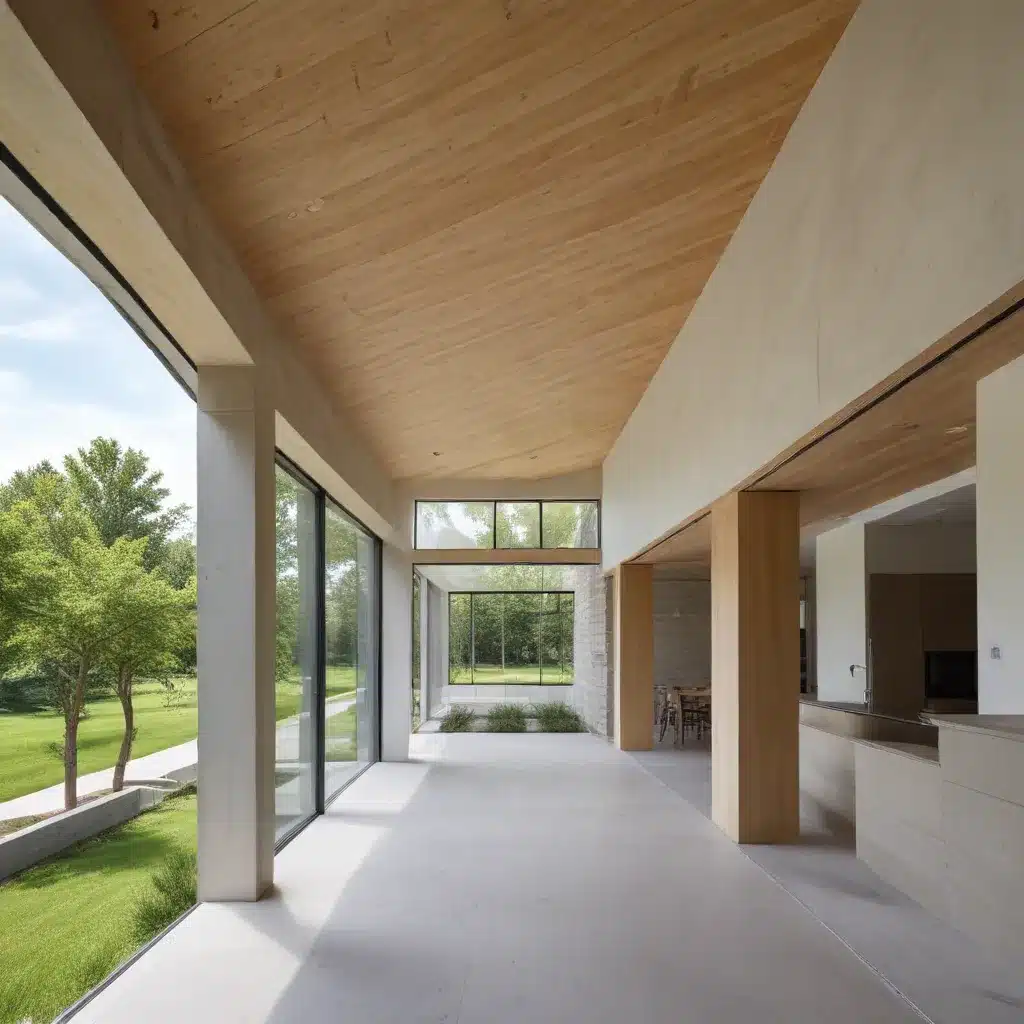
Eco-Friendly Renovations: Preserving Architectural Integrity
As an experienced home improvement consultant, I’ve witnessed firsthand the transformative power of eco-friendly renovations. Whether you’re tackling a historic property or seeking to modernize your family home, embracing sustainable practices can breathe new life into your living spaces while honoring their architectural integrity. In this comprehensive guide, we’ll explore a range of strategies and techniques that will help you create beautiful, energy-efficient, and environmentally conscious renovations.
Sustainable Materials
Selecting the right eco-friendly building materials is a crucial first step in any renovation project. By opting for sustainable options, you can not only reduce your carbon footprint but also contribute to the preservation of our planet’s resources.
Eco-Friendly Building Materials
Look for natural, renewable materials such as bamboo, cork, or reclaimed wood. These materials often have a lower environmental impact during production and can be sourced locally, minimizing transportation emissions. Additionally, consider insulation made from recycled content, such as cellulose or wool, which can enhance energy efficiency while reducing waste.
Recycled and Reclaimed Materials
Repurposing existing materials is a fantastic way to incorporate sustainability into your renovation. Explore the use of reclaimed wood, salvaged architectural elements, or even upcycled furniture to create unique and one-of-a-kind designs. This not only reduces waste but also adds character and historical charm to your space.
Low-Impact Production Processes
When selecting materials, research the manufacturing processes used. Opt for products made with low-energy, low-emissions production methods to further minimize the environmental impact of your renovation. This could include bamboo flooring, zero-VOC paints, or energy-efficient appliances.
Energy-Efficient Upgrades
Improving the energy efficiency of your home is a crucial aspect of eco-friendly renovations. By incorporating the latest technologies and sustainable design strategies, you can significantly reduce your energy consumption and utility bills while contributing to a more sustainable future.
Renewable Energy Integration
Consider integrating renewable energy systems, such as solar photovoltaic (PV) panels or geothermal heat pumps, into your renovation. These clean energy solutions can dramatically lower your carbon footprint and provide long-term cost savings on energy bills.
Insulation and Weatherproofing
Enhance your home’s thermal performance by upgrading insulation and weatherproofing. Install high-R-value insulation in walls, attics, and crawl spaces to minimize heat transfer and reduce energy demands for heating and cooling. Upgrade windows to energy-efficient, double-glazed or triple-glazed models to further improve your home’s energy efficiency.
Efficient Heating and Cooling Systems
Replacing outdated HVAC systems with energy-efficient alternatives, such as heat pumps or high-efficiency furnaces and air conditioners, can dramatically reduce your energy consumption and carbon footprint. Integrate smart home technologies to optimize temperature control and improve overall system efficiency.
Preserving Historic Features
When renovating historic properties, it’s essential to strike a balance between modernization and preserving the architectural integrity of the building. By thoughtfully incorporating sustainable practices, you can breathe new life into these cherished spaces while honoring their cultural heritage.
Restoration Techniques
Work closely with experienced preservation architects and restoration specialists to identify and carefully restore original architectural features, such as ornate moldings, stained-glass windows, or intricate plasterwork. Employ traditional construction methods and authentic materials to maintain the property’s historical authenticity.
Adaptive Reuse Strategies
In some cases, repurposing and adapting existing features can be a sustainable approach. Transform underutilized spaces, such as attics or basements, into functional living areas while respecting the building’s original design. This adaptive reuse strategy allows you to preserve the property’s character while introducing modern amenities.
Cultural Heritage Considerations
When renovating historic properties, be mindful of cultural heritage and local regulations. Consult with heritage authorities and community organizations to understand any preservation requirements or restrictions that may apply. This collaboration ensures that your renovation project aligns with the property’s historical significance and contributes to the preservation of the local architectural landscape.
Minimizing Environmental Impact
Beyond material selection and energy-efficient upgrades, there are several strategies you can implement to minimize the environmental impact of your renovation project. By adopting a holistic approach, you can create a more sustainable living space that benefits both your home and the planet.
Waste Reduction Measures
Prioritize waste reduction throughout the renovation process. Work with your contractors to divert construction materials from landfills by donating, recycling, or repurposing items whenever possible. Implement on-site waste management practices to minimize the volume of waste generated during the project.
Water Conservation Strategies
Incorporate water-efficient fixtures, such as low-flow faucets and showerheads, to reduce water consumption. Consider rainwater harvesting systems to collect and reuse rainwater for irrigation or other non-potable applications, further reducing your demand on municipal water resources.
Sustainable Site Management
Ensure that your renovation footprint is as minimal as possible by protecting existing vegetation, limiting site disturbance, and restoring any damaged landscaping upon project completion. Explore green infrastructure solutions, like permeable pavement or bioswales, to manage stormwater runoff and promote natural groundwater recharge.
By embracing these eco-friendly renovation strategies, you can create a living space that not only aligns with your personal values but also contributes to a more sustainable future. Whether you’re tackling a historic property or modernizing a family home, the principles of sustainable design, energy efficiency, and preserving architectural integrity can guide you towards a renovation project that is truly transformative.
For more inspiration and practical tips on budget-friendly projects, family-friendly design, and time-saving hacks, be sure to explore the wealth of resources available on Reluctant Renovator. As an experienced home improvement consultant, I’m here to help you navigate the exciting world of eco-friendly renovations and create a living space that is both beautiful and environmentally conscious.



